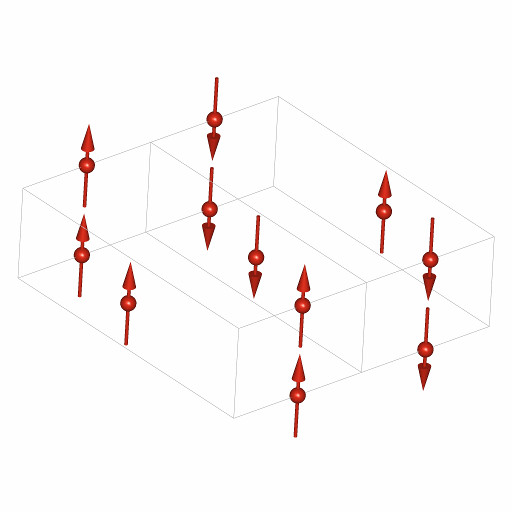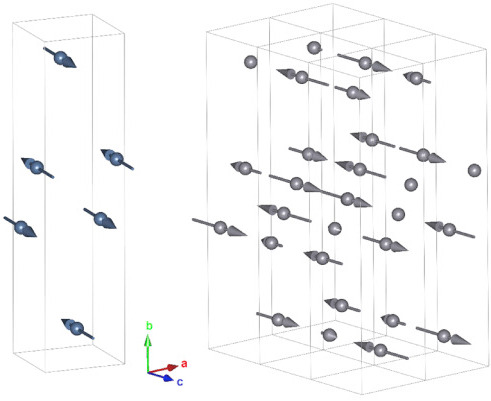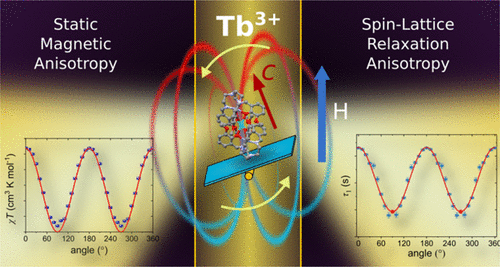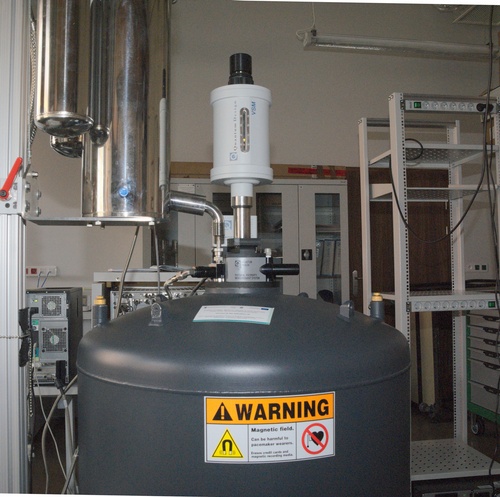Magnetic properties of condensed matter

Team members
| Associate Professor Stanisław Baran (group leader) |
 |
 |
 |
|
| Prof. Andrzej Szytuła (Volunteer) |
Dr Teresa Jaworska-Gołąb (Volunteer) |
M.Sc. Altifani Hayyu (PhD student) |
M.Sc. Janusz Ryrych (technician) |
Investigation of magnetic properties of condensed matter is of great importance from both the fundamental as well as application point of view. Understanding the influence of chemical composition, crystal structure, chemical bonds and interatomic distances on magnetic properties is essential while looking for new materials with desired properties.
Our scientific interest concentrates on the following topics:
1) Magnetic properties of rare earth intermetallics
As rare earth ions carry high localized magnetic moments (especially “heavy rare earths” from Gd to Tm) due to their unfilled 4f electron subshell, the intermetallics containing such elements show intriguing physical properties including complex/frustrated magnetic structures, metamagnetism, large magnetocaloric effect (MCE), valence fluctuation, heavy fermion behavior, Kondo effect, etc.
Our recent paper on magnetic properties in RAl0.2Ge2 (R = Tb, Dy, Ho, Er, Tm) is an example of work extending knowledge of physical properties in this class of materials (A. Gil et al., J. Alloys Compd. 792 (2019) 142-150, https://doi.org/10.1016/j.jallcom.2019.03.309).

The low-temperature magnetic unit cell in HoAl0.2Ge2 (left) and a fragment of the incommensurate antiferromagnetic ordering in TbAl0.2Ge2 (right) as determined from powder neutron diffraction (for details see A. Gil et al., J. Alloys Compd. 792 (2019) 142-150, https://doi.org/10.1016/j.jallcom.2019.03.309)
2) Single-molecule magnets
Single-molecule magnets are metal-organic compound that show intramolecular magnetic ordering due to superexchange interactions while the whole material behaves like a superparamagnet below a certain blocking temperature. The research in this field is recently rapidly growing as single-molecule magnets are found to be promising materials in constructing new types of high-density computer magnetic memories.

The origin of magnetic anisotropy in single crystals of [Tb3+(ZnL)2]CF3SO3 (for details see P. Konieczny et al., J. Phys. Chem. C 124 (2020) 7930-7937, https://doi.org/10.1021/acs.jpcc.9b11057)
3) Intermetallics showing large magnetocaloric effect
Magnetocaloric effect has been recently intensively investigated due to its potential in refrigeration. The refrigerators based on this effect will be much more energy efficient than the conventional ones used nowadays. Finding a material which shows large magnetocaloric effect and it is cheap, safe and durable is one of the main challenges of material research.
Our recent research on magnetocaloric effect in the slowly cooled samples of the NiMn1−xCrxGe system has shown that the chemical composition has essential influence on magnetic entropy change.

Influence of chemical composition on structural and magnetic properties of the slowly cooled samples of the NiMn1−xCrxGe system (left) and magnetocaloric effect in slowly cooled NiMn0.75Cr0.25Ge (right) (for details see A. Szytuła et al. J. Alloys Compd. 726 (2017) 978-988, https://doi.org/10.1016/j.jallcom.2017.08.044)
Apparatus
 |
 |
| X'Pert PRO X-ray diffractometer by PANalytical | Physical Property Measurement System (PPMS) by Quantum Design |
Our laboratory is equipped with:
1) a number of furnaces (including arc and muffle ones) used for synthesis of intermetallics samples
2) X'Pert PRO X-ray diffractometer by PANalytical used for examination of samples’ crystal structure and phase composition
3) Physical Property Measurement System (PPMS) by Quantum Design – a powerful tool for investigation of different physical properties, like for example magnetic susceptibility, magnetization, electrical resistivity, specific heat, etc. within wide temperature range from 1.9 to 400 K and external magnetic field up to 9 T (90 kOe).
Selected publications in high-rated journals
Magnetic properties of rare earth intermetallics
1) S. Baran, P. Kurzydło, Yu Tyvanchuk, A. Hoser, A. Szytuła, Magnetic properties and magnetic structures in R3Ni2In4 (R = Tb–Tm), Journal of Alloys and Compounds 832 (2020) 154926; doi: 10.1016/j.jallcom.2020.154926
2) B. Penc, S. Baran, A. Hoser, A. Szytuła, Magnetic properties and magnetic structures of R2TGe6 (T = Ni, Cu; R = Tb, Ho and Er), Journal of Alloys and Compounds 803 (2019) 307-313, doi:https://doi.org/10.1016/j.jallcom.2019.06.027
3) A. Gil, S. Baran, T. Jaworska-Gołąb, A. Hoser, A. Balińska, V. Pavlyuk, A. Szytuła, Structural and magnetic properties of the RAl0.2Ge2 compounds (R= Tb, Dy, Ho, Er, Tm), Journal of Alloys and Compounds 792 (2019) 142-150; doi:https://doi.org/10.1016/j.jallcom.2019.03.309
4) S. Baran, A. Szytuła, A. Hoser, Collinear antiferromagnetic structure in R2Ni2In (R = Er, Tm), Journal of Alloys and Compounds 696 (2017) 1278–1281, doi:10.1016/j.jallcom.2016.12.072
5) S. Baran, A. Szytuła, D. Kaczorowski, F. Damay, Complex magnetic ordering in Tm3Cu4Si4, Journal of Alloys and Compounds 688 (2016) 577-584, doi: 10.1016/j.jallcom.2016.07.241
Single-molecule magnets
1) P. Konieczny, R. Pełka, Y. Masuda, S. Sakata, S. Kayahara, N. Irie, T. Kajiwara, S. Baran, Anisotropy of Spin–Lattice Relaxations in Mononuclear Tb3+ Single-Molecule Magnets, J. Phys. Chem. C 124 (2020) 7930-7937; doi: 10.1021/acs.jpcc.9b11057
2) J. Kobylarczyk, M. Liberka, P. Konieczny, S. Baran, M. Kubicki, T. Korzeniak, R. Podgajny, Bulky ligands shape the separation between the large spin carriers to condition field-induced slow magnetic relaxation, Dalton Transactions 49 (2020) 300-311; doi: 10.1039/c9dt03903a
3) G. Handzlik, M. Magott, M. Arczyński, A. M. Sheveleva, F. Tuna, S. Baran, D. Pinkowicz, Identical anomalous Raman relaxation exponent in a family of single ion magnets: towards reliable Raman relaxation determination?, Dalton Trans. 49 (2020) 11942-11949, doi: 10.1039/D0DT02439B
4) P. Konieczny, S. Chorazy, R. Pełka, K. Bednarek, T. Wasiutyński, S. Baran, B. Sieklucka, R. Podgajny, Double Magnetic Relaxation and Magnetocaloric Effect in the {Mn9[W(CN)8]6(4,4′-dpds)4} Cluster-Based Network, Inorganic Chemistry 56 (2017) 7089-7098, doi:10.1021/acs.inorgchem.7b00733
Intermetallics showing large magnetocaloric effect
1) R. Duraj, A. Szytuła, T. Jaworska-Gołąb, A. Deptuch, Yu. Tyvanchuk, A. Sivachenko, V. Val’kov, V. Dyakonov, Pressure effect on magnetic phase transitions in slowly cooled NiMn1-xCrxGe, Journal of Alloys and Compounds 741 (2018) 449-453; DOI: 10.1016/j.jallcom.2018.01.064
2) A. Szytuła, S. Baran, T. Jaworska-Gołąb, M. Marzec, A. Deptuch, Yu. Tyvanchuk, B. Penc, A. Hoser, A. Sivachenko, V. Val'kov, V. Dyakonov, H. Szymczak, Influence of Cr doping on magnetocaloric effect and physical properties of slowly cooled NiMn1−xCrxGe, Journal of Alloys and Compounds 726 (2017) 978-988, doi:10.1016/j.jallcom.2017.08.044
